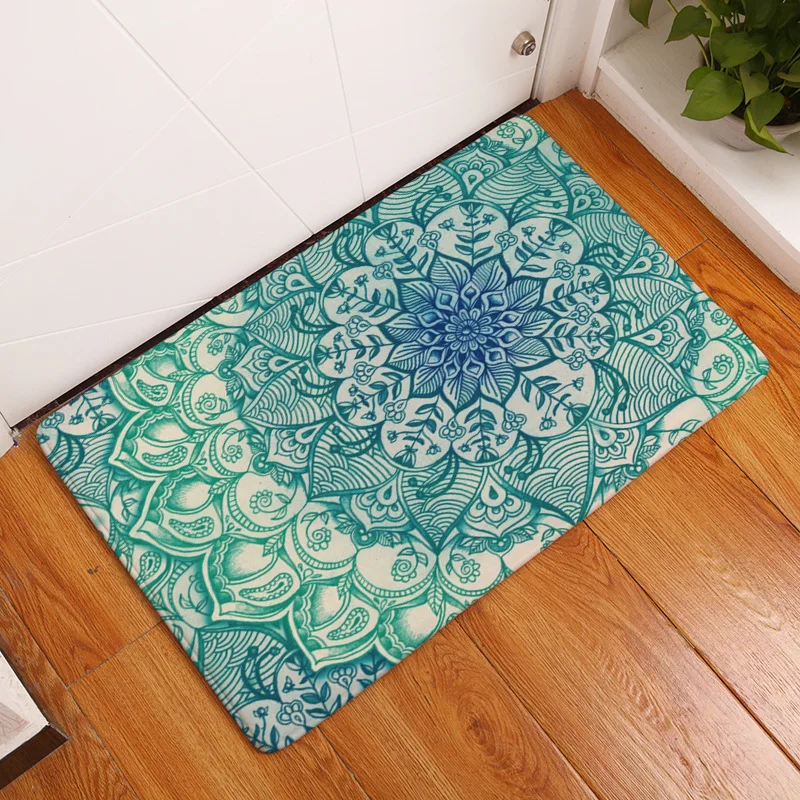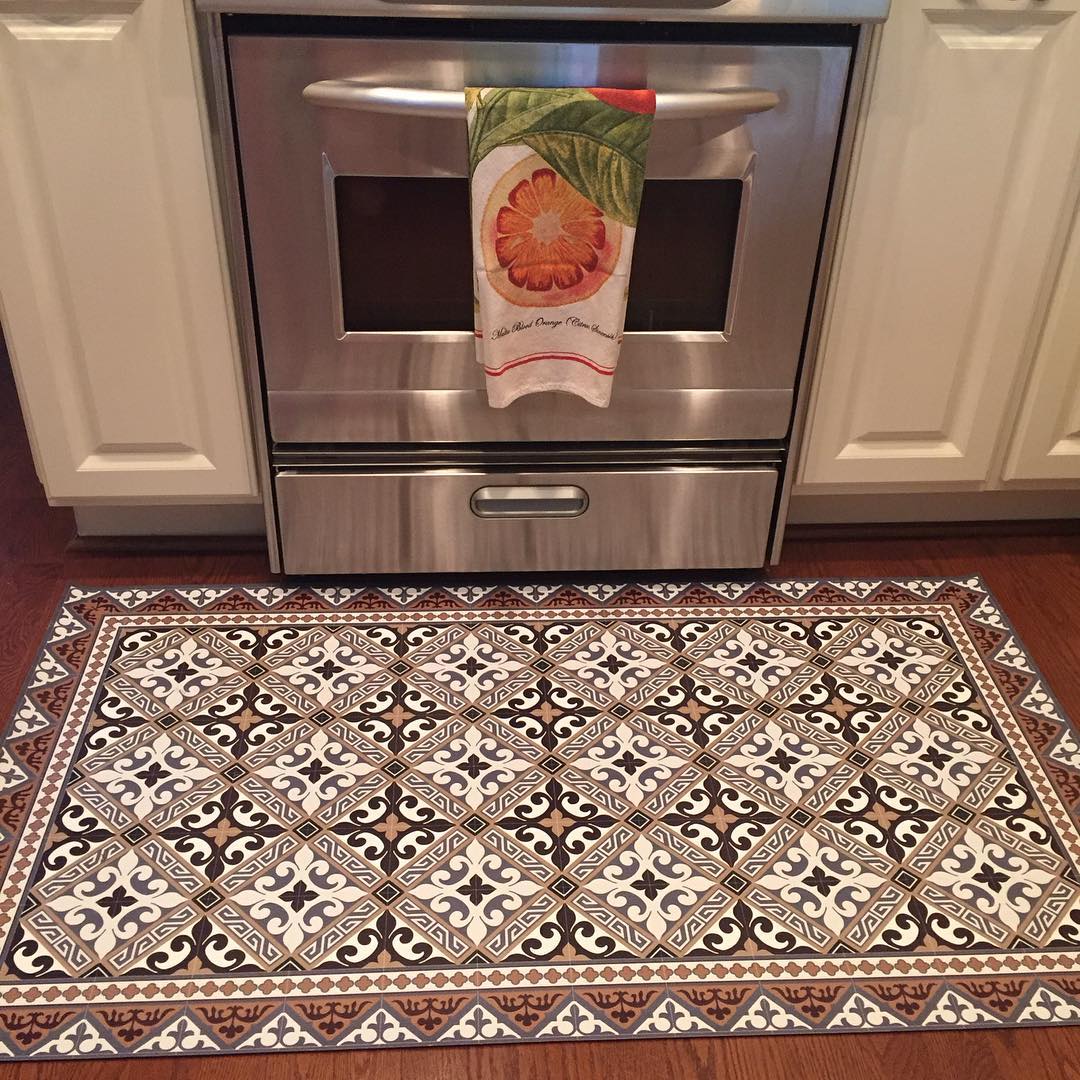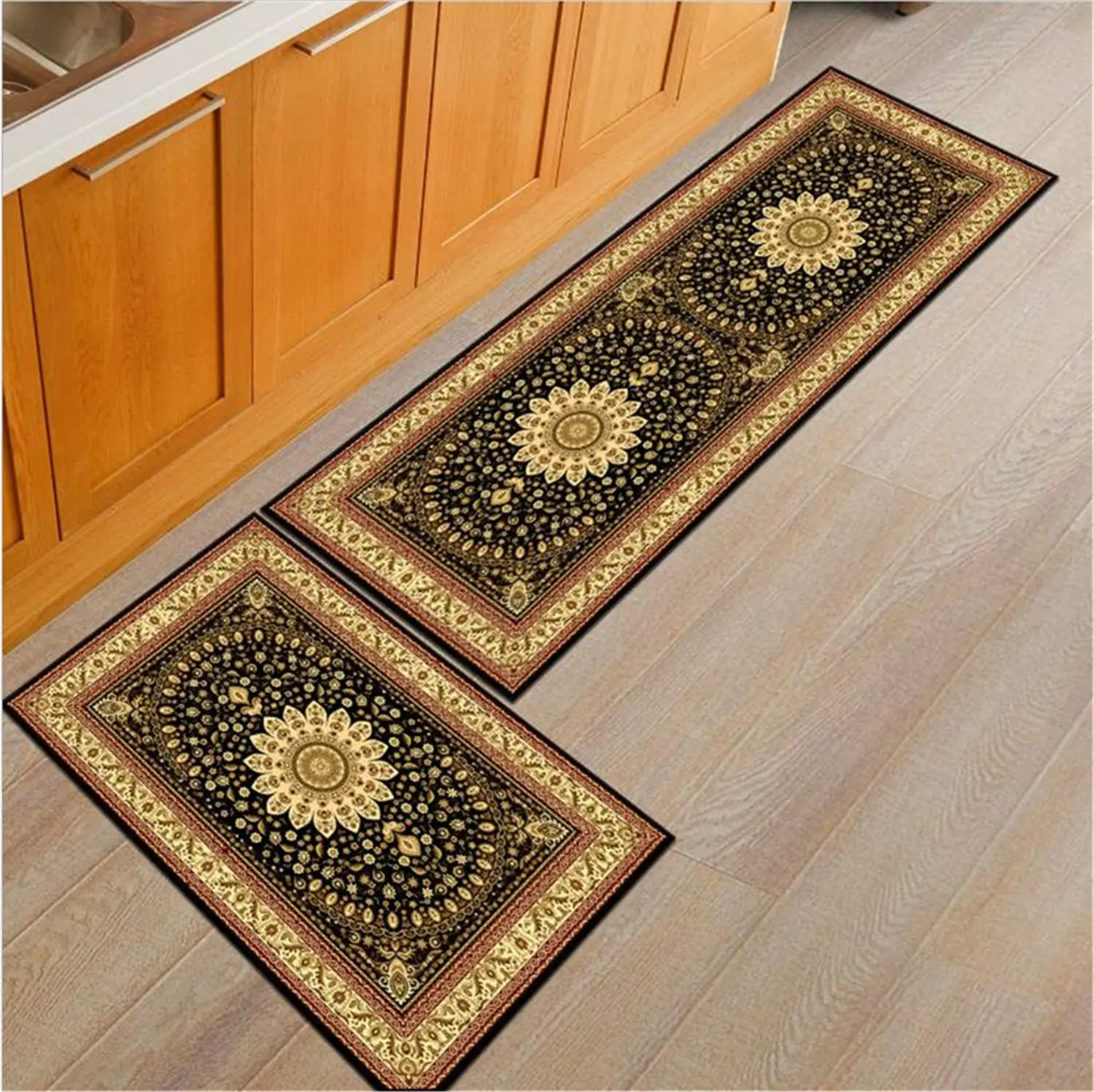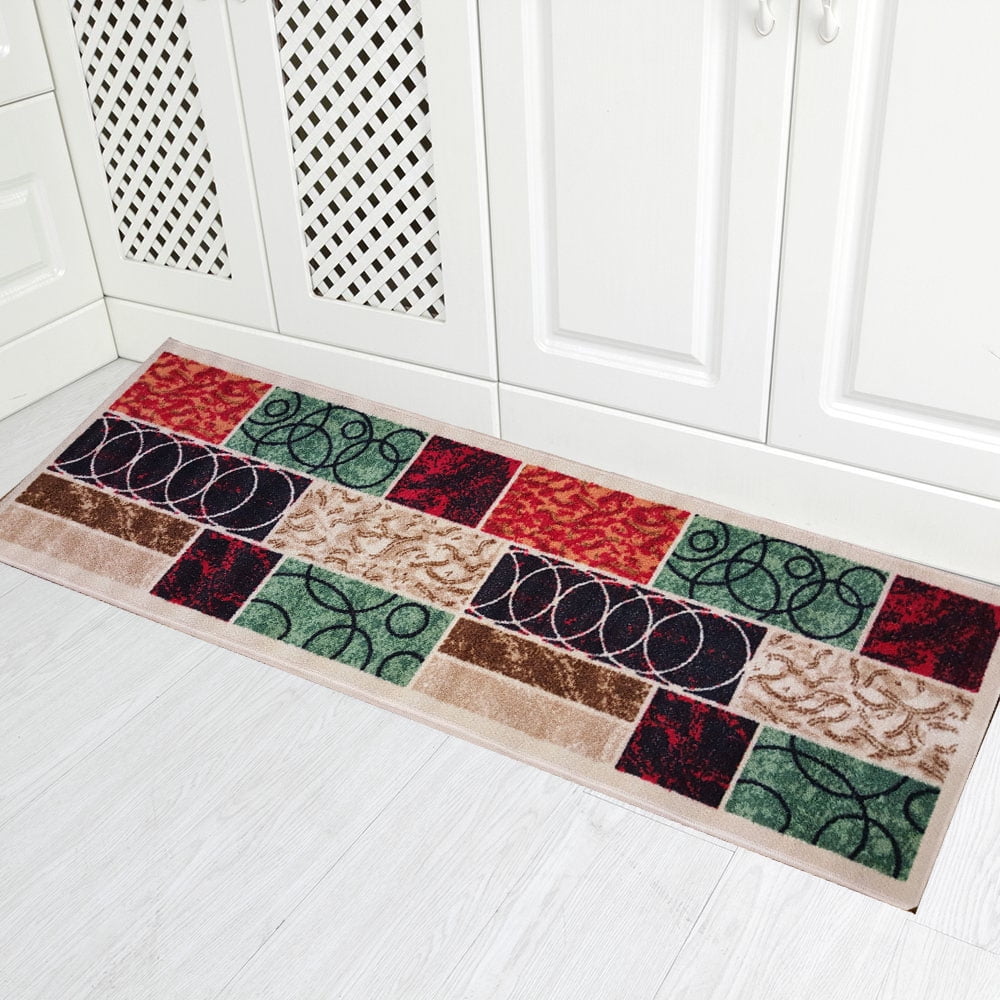When it comes to kitchen design, practicality and comfort are key considerations. One often-overlooked yet essential item that can significantly enhance both is the kitchen floor mat. Not only do floor mats provide a cushioned surface that eases strain during cooking and cleaning, but they also protect your floors from spills and wear. Let’s discuss different aspects of choosing and using cheap kitchen floor mats, from different types and materials to style tips and maintenance. Whether you’re on a budget or simply looking for practical solutions, there’s a floor mat option that can meet your needs.
Types of Kitchen Floor Mats
- Anti-Fatigue Mats: These mats are designed to reduce fatigue and discomfort caused by standing for long periods. They are made with cushioning materials like foam or gel, providing support and reducing pressure on the feet, legs, and back. Anti-fatigue mats are perfect for areas where you spend a lot of time standing, such as in front of the sink or stove.
- Gel Mats: Similar to anti-fatigue mats, gel mats offer excellent cushioning and support. They are often a bit more expensive but provide superior comfort. Gel mats are ideal for those who spend extended periods in the kitchen and need extra relief from discomfort.
- Rubber Mats: Rubber mats are durable and slip-resistant, making them a great choice for kitchens. They are easy to clean and maintain, often being resistant to stains and water. Rubber mats come in various thicknesses and styles, providing both comfort and safety.
- Vinyl Mats: Vinyl mats are another affordable option. They are lightweight, easy to clean, and come in a wide range of colors and patterns. Vinyl mats can mimic the appearance of more expensive materials like wood or stone, making them a versatile choice for any kitchen décor.
- Decorative Mats: These mats are more focused on style and aesthetics. While they may not offer the same level of cushioning as anti-fatigue or gel mats, they can add a pop of color or a decorative touch to your kitchen. Decorative mats are available in various designs, from floral patterns to modern geometric shapes.
- Rug-style Mats: For those who prefer a more traditional look, rug-style mats can be a great option. These mats resemble small area rugs and come in various textures and patterns. They offer a cozy and warm feel but may require more frequent cleaning and maintenance compared to other types.

Materials and Durability
The material of a kitchen floor mat is a crucial factor that affects its durability, comfort, and maintenance. Different materials offer unique benefits, and understanding these can help you make an informed choice.
Foam Mats: Foam mats are lightweight and provide good cushioning, making them a popular choice for anti-fatigue mats. They are affordable and available in various thicknesses. However, foam mats may not be as durable as other materials, especially in high-traffic areas.
Gel Mats: Gel mats are made with a gel core that provides excellent support and cushioning. They are often combined with a durable surface layer, such as vinyl or polyurethane, to enhance longevity. Gel mats are resistant to wear and tear, making them a good investment for those seeking comfort.
Rubber Mats: Rubber mats are known for their durability and slip-resistant properties. They can withstand heavy use and are resistant to water and stains. Rubber mats are easy to clean and maintain, making them ideal for busy kitchens. They are also available in various thicknesses and textures.
Vinyl Mats: Vinyl mats are a versatile and cost-effective option. They are durable and easy to clean, resistant to stains and moisture. Vinyl mats come in various styles, including those that mimic natural materials like wood or stone. While they may not provide as much cushioning as foam or gel mats, they offer a good balance of comfort and durability.
Fabric Mats: Fabric mats, such as those made from cotton or polyester, offer a softer and more comfortable surface. They are available in various designs and can add a decorative touch to the kitchen. However, fabric mats may require more frequent cleaning and are not as resistant to moisture and stains as other materials.
Combination Mats: Some mats combine multiple materials to provide the benefits of each. For example, a mat may have a foam or gel core for cushioning, with a durable vinyl or rubber surface layer for added protection and ease of cleaning. These combination mats offer a good balance of comfort, durability, and style.

Style and Aesthetic Appeal
While functionality is crucial, the aesthetic appeal of kitchen floor mats shouldn’t be overlooked. The right mat can complement your kitchen décor and add a stylish touch.
Color Coordination: One of the easiest ways to choose a kitchen floor mat is by matching it with your existing color scheme. For a cohesive look, select a mat in a color that complements your cabinets, countertops, or wall color. Neutral shades like gray, beige, or black are versatile and can blend well with various styles.
Patterns and Designs: If you want to make a statement or add visual interest, consider mats with patterns or designs. From geometric shapes to floral patterns, there are numerous options to choose from. A bold pattern can add a focal point to your kitchen, while a subtle design can enhance the overall aesthetic without overpowering the space.
Textures and Finishes: The texture of a mat can also contribute to its visual appeal. For example, a mat with a woven texture can add a cozy, rustic feel, while a smooth, glossy mat can give a modern and sleek look. Consider the overall style of your kitchen and choose a mat that complements it.
Thematic Décor: If your kitchen has a specific theme, such as farmhouse, coastal, or modern, select a mat that fits within that theme. For a farmhouse-style kitchen, a mat with a vintage or rustic design would be ideal. For a coastal theme, consider mats with nautical motifs or cool, calming colors.
Custom Mats: For a truly unique look, consider custom-made mats. Many manufacturers offer the option to personalize mats with specific colors, patterns, or even text. Custom mats can be a great way to add a personal touch to your kitchen and make it feel more special.
Seasonal and Holiday Mats: Switching out your kitchen mats for seasonal or holiday-themed ones is a fun way to refresh your space throughout the year. Look for mats with festive designs for holidays like Christmas, Halloween, or Thanksgiving. Seasonal mats with floral or nature-inspired patterns can also brighten up your kitchen during different times of the year.

Comfort and Ergonomics
Comfort and ergonomics are essential considerations when choosing a kitchen floor mat, especially if you spend a lot of time standing while cooking or cleaning. A well-chosen mat can make a significant difference in your comfort and well-being.
Cushioning: The primary function of a kitchen floor mat is to provide cushioning. Mats with thicker padding, such as those made from foam or gel, offer more comfort and support. This cushioning can reduce pressure on your feet, legs, and lower back, making it more comfortable to stand for extended periods.
Anti-Fatigue Properties: Anti-fatigue mats are specifically designed to reduce fatigue caused by standing. They encourage subtle movements that help to improve blood circulation and reduce muscle strain. These mats are ideal for anyone who spends a lot of time cooking, washing dishes, or performing other kitchen tasks.
Size and Placement: The size and placement of the mat also play a role in comfort. Ensure that the mat is large enough to cover the area where you stand most frequently. For example, place an anti-fatigue mat in front of the sink or stove where you spend a lot of time. This ensures that you have ample cushioning where you need it most.
Non-Slip Features: Safety is a critical aspect of comfort, and non-slip features are essential for kitchen mats. Look for mats with a non-slip backing or surface to prevent slipping and ensure stability. This is especially important in the kitchen, where spills can make floors slippery.
Edge Design: The design of the mat’s edges can also affect comfort and safety. Beveled edges, for example, reduce the risk of tripping and make it easier to transition on and off the mat. This is particularly useful in high-traffic areas of the kitchen.
Allergen Considerations: For those with allergies or sensitivities, it’s important to choose mats made from hypoallergenic materials. Some mats are designed to be resistant to mold, mildew, and dust mites, making them a healthier choice for the kitchen environment.

Budget-Friendly Options
Finding the right kitchen floor mat doesn’t mean breaking the bank. There are plenty of affordable options that provide comfort, style, and durability. Here’s how to find budget-friendly mats without compromising on quality.
Set a Budget: Before you start shopping, set a budget for how much you’re willing to spend on kitchen floor mats. This will help you narrow down your options and avoid overspending. Remember that while some high-end mats can be expensive, there are plenty of quality options available at lower price points.
Compare Prices: Take the time to compare prices across different retailers. Online shopping platforms often offer a wide range of mats at various price points, and you can easily compare features and reviews. Don’t forget to check for sales, discounts, or coupon codes that can help you save even more.
Consider Multipacks: Some retailers offer multipacks of kitchen mats, which can be a cost-effective option. Multipacks often include several mats in different sizes or designs, allowing you to outfit multiple areas of your kitchen. This is especially useful if you need mats for the sink, stove, and other areas.
DIY Options: For the crafty or budget-conscious, DIY kitchen mats can be a fun and affordable option. There are plenty of tutorials online that show how to make your mats using materials like foam, fabric, or even old carpets. DIY mats allow you to customize the size, shape, and design to fit your specific needs.
Look for Clearance Sales: Many stores offer clearance sales or discounts on seasonal items. Keep an eye out for these sales, as they can be an excellent opportunity to purchase high-quality mats at a fraction of the regular price. End-of-season sales, holiday promotions, and store closures are all good times to find deals.
Prioritize Features: While it’s tempting to go for the cheapest option, prioritize the features that matter most to you, such as cushioning, durability, or non-slip properties. Sometimes spending a little more can get you a mat that lasts longer and provides better comfort, ultimately offering better value for your money.

Maintenance and Care
Proper maintenance and care of kitchen floor mats are essential to ensure they last and continue to look good. Different materials require different care routines, so it’s important to know how to properly clean and maintain your mats.
Regular Cleaning: Regular cleaning is essential to keep your kitchen mats looking fresh and free from stains and odors. For most mats, a simple vacuum or shake-out can remove loose dirt and debris. For mats made of fabric or those with a textured surface, a quick vacuum with a brush attachment can help lift dirt and crumbs.
Spot Cleaning: Accidents happen, and spills are common in the kitchen. For small spills, spot-clean the mat with a damp cloth and mild detergent. Avoid using harsh chemicals that could damage the mat’s material. Be sure to blot, rather than rub, to avoid spreading the stain.
Deep Cleaning: Depending on the material, some mats may require periodic deep cleaning. Rubber and vinyl mats can often be washed with soap and water, then air-dried. Fabric mats may be machine washable, but always check the care instructions first. For gel or foam mats, follow the manufacturer’s recommendations to avoid damaging the material.
Preventing Wear and Tear: To prolong the life of your kitchen mats, take steps to prevent excessive wear and tear. For example, avoid placing mats in areas with sharp objects or heavy furniture that could damage them. Rotate the mats occasionally to ensure even wear, especially if they are in high-traffic areas.
Storing Mats: If you switch out your mats seasonally or have extras on hand, store them properly to avoid damage. Roll them up, rather than folding, to prevent creases and maintain their shape. Store in a dry, cool place to avoid mold or mildew, especially if the mats are made from fabric or other absorbent materials.
Replacing Mats: Even with proper care, kitchen mats will eventually show signs of wear. When mats become worn, frayed, or lose their cushioning, it’s time to replace them. Regularly inspect your mats for signs of wear and replace them as needed to maintain comfort and safety in your kitchen.

Finding the Perfect Kitchen Floor Mat on a Budget
Kitchen floor mats are an essential addition to any home, providing comfort, safety, and style. With a wide variety of types, materials, and designs available, there’s a mat to suit every budget and need. By understanding the different options and considering factors such as comfort, aesthetics, and maintenance, you can find the perfect mat for your kitchen. Whether you’re looking for a simple, budget-friendly option or a more luxurious choice, the right mat can enhance your cooking experience and protect your floors for years to come.

Rug Non-Skid Runner Kitchen Mat Non-Slip Rug for Kitchen Floor

Kitchen floor mats cushioned

Kitchen Rugs Fruit Design – Paint Colors Interior

Kitchen Mats For Hardwood Floors Buyer’s Guide

Luxe Therapeutic Floor Mats Kitchen mats floor

Related Posts: